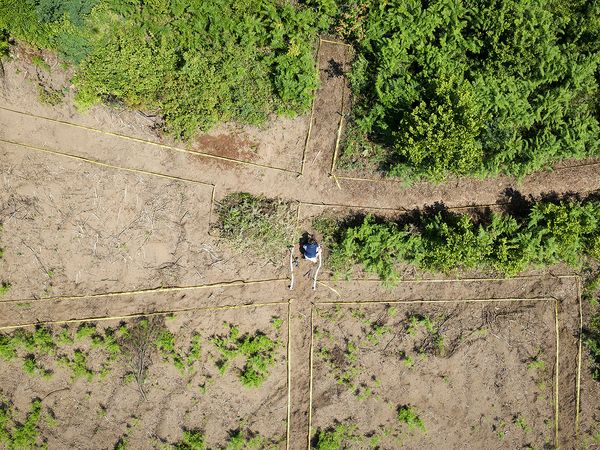Mineland - The Endless War
-
Dates2016 - Ongoing
-
Author
- Topics Portrait, Social Issues, Documentary
- Locations Kosovo, Bosnia and Herzegovina, Croatia
This is an ongoing project on minefields and their victims in former Yugoslavia: Bosnia, Croatia, Kosovo and Serbia. Here, unexploded ordnance still present a serious problem. Their removal is dangerous, and very complex. And every year more women and men fall victims of this endless war.
All modern conflicts leave a problem of unexploded ordnance in their aftermath. In many instances these munitions remain for decades and inflict severe human, social and economic costs.
It is seldom remembered that Europe is not immune from this issue. Today, landmine-affected countries in Europe are Croatia, Bosnia-Hercegovina, Kosovo, Serbia, with a total of about 150,000 buried landmines and unexploded ordnance left during recent wars. According to Landmine and Cluster Munition Monitor, and independent organisation working on reporting landmines removal process and victims, Bosnia and Herzegovina present a “massive contamination” by landmines. Today the country has about 1400 square km of areas with different levels of contamination by unexploded ordnance. Twenty years after the end of the conflicts, BiH is still the most mined country in Europe, with about 82,000 mines to be cleared, putting more than half-a-million people at direct risk, according to the International Committee of the Red Cross (ICRC).
With an average removal cost of 1000 euros per mine, BiH needs about 80 million euros to finish demining, which should have been done by 2019. Funds cut is behind the main reason why deadlines will not be met in avery country in Europe affected by landmines. The latest figures state the the deeming program is 5 years late. Every year deminers and civilians die or get injured because of ordnance explosion.
According to the 2014 Landmine and Cluster Munition Monitor report, Republic of Croatia is contaminated by about 70,000 mines and an unknown number of unexploded ordnance, covering 413 square kilometres of territory. Croatia has an unusually commercialised demining sector, with almost only private companies engaged in clearing operations. Governmental agency CROMAC believes that this model of privatized clearance is “faster, cheaper and more efficient.” At the end of 2014, there were 40 demining companies accredited in Croatia, employing 650 deminers. However, some NGO question the quality of demining, and the deminers security. Also Croatia is not in track to meet the deadline of 2019 for landmines clearance. As a matter of fact, Croatia has a very high number of landmine victims among deminers.
Another country affected by unexploded ordnance contamination is Kosovo. The UN declared in 2001 that thsi small Balkan state was mine-free, but deminers are still continuing to clear unexploded ordinance in the country. Demining charity the Halo Trust says clearance will not be completed before 2026. Mines are found mainly on Kosovo’s borders with Albania and the former Yugoslav Republic of Macedonia, but also in the area of Dulie Pass in southcentral Kosovo.
Serbia presents a number of areas contaminated by unexploded ordnance and landmines, and new areas are being discovered every year. Serbian officials say that clearance rate has stalled and deadlines have to be postponed due to funds cuts.
Today, rural communities are particularly affected by landmines. Already impoverished before the conflict, their condition is further aggravated by the loss of cattle and access to agricultural land. Land mines are a safety issue for people living near minefields. Mine-clearance has been carried on since the end of the conflicts, however operations are still ongoing, mainly due to the high financial costs necessary to complete them. Removing one landmine costs up to $1,000, while planting costs about $1.
A common sentiment of all organisations involved in demining operations is that greater funds are required to increase clearance capacity and ultimate demining in a timely manner.
The present project wants to bring to the public’s attention an issue which is far from being solved. The photographic documentation includes aerial photographs of minefields and demining operations as well as still-life images of exploded ordnance, tools used by deminers and and prosthetic limbs.
I am planning to continue the project by visiting more countries.















